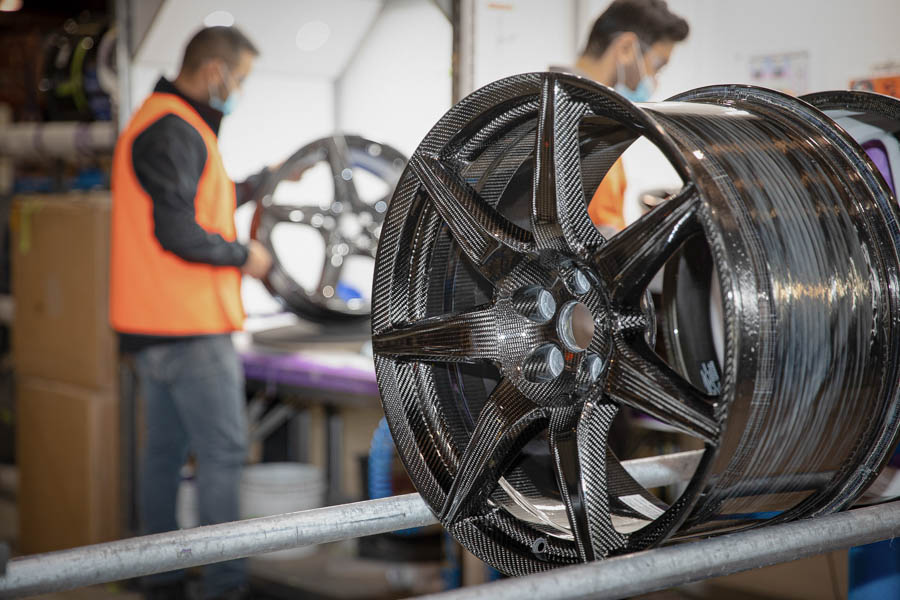02 April 2022
The battle for EV range is creating vehicles that are far heavier than internal combustion engine predecessors. The weight of EV batteries strains other vehicle systems and ultimately reduces the vehicle’s efficiency which impedes range improvements. New lightweight technologies offer a solution to automakers looking to increase EV efficiency and boost range.
MotorTrend spoke with Carbon Revolution’s Ash Denmead to understand how carbon fibre wheel technology will aid weight reduction and range extension of EVs.
More efficient, more aerodynamic wheels
Carbon Revolution is developing a 24” wheel for an OEM partner that will be around 45% lighter than an aluminium wheel of the same size, yet strong enough to withstand the vehicle’s high load requirements. This drastic reduction in mass – unsprung, rotational mass – reaps rewards in boosting efficiency and range.
Wheel design also plays a critical role in an EV’s range, with up to 25% of a vehicle’s aerodynamic drag coming from its wheels. Regenerative braking systems in EVs reduce the need for brake cooling, allowing designers and engineers to create more aerodynamic, closed-off EV wheels. In this application, carbon fibre becomes a much more attractive material as aerodynamic structures can be incorporated into the wheel design, without prohibitive weight increases which affect metal wheels.
Rigid and strong by design
One of the major facets of developing wheels is ensuring strength while also enabling flexibility under impact. That flexibility is essential for encountering potholes, speed bumps and curbs.
By specifically arranging the threads of the carbon fibre weave in the design process, Carbon Revolution engineers can harness the rigidity and strength of carbon fibre without the wheels becoming hard and brittle. This enables the wheels to be up to 45% lighter than equivalent aluminium wheels, while still ensuring they meet all of the same OEM impact and fatigue performance requirements that aluminium wheels do. Alternatively, the company can reinforce a carbon fibre wheel with additional material and make it still 35% lighter, but 50% stronger than the aluminium equivalent.
Changes in manufacturing
MotorTrend points out that manufacturing carbon fibre parts just a few years ago was a labour-intensive process. Today, Carbon Revolution’s advanced manufacturing facility enables the production of tens of thousands of wheels per year, with the company automating and scaling up its operation even further to meet growing demand.
See the full article here.


